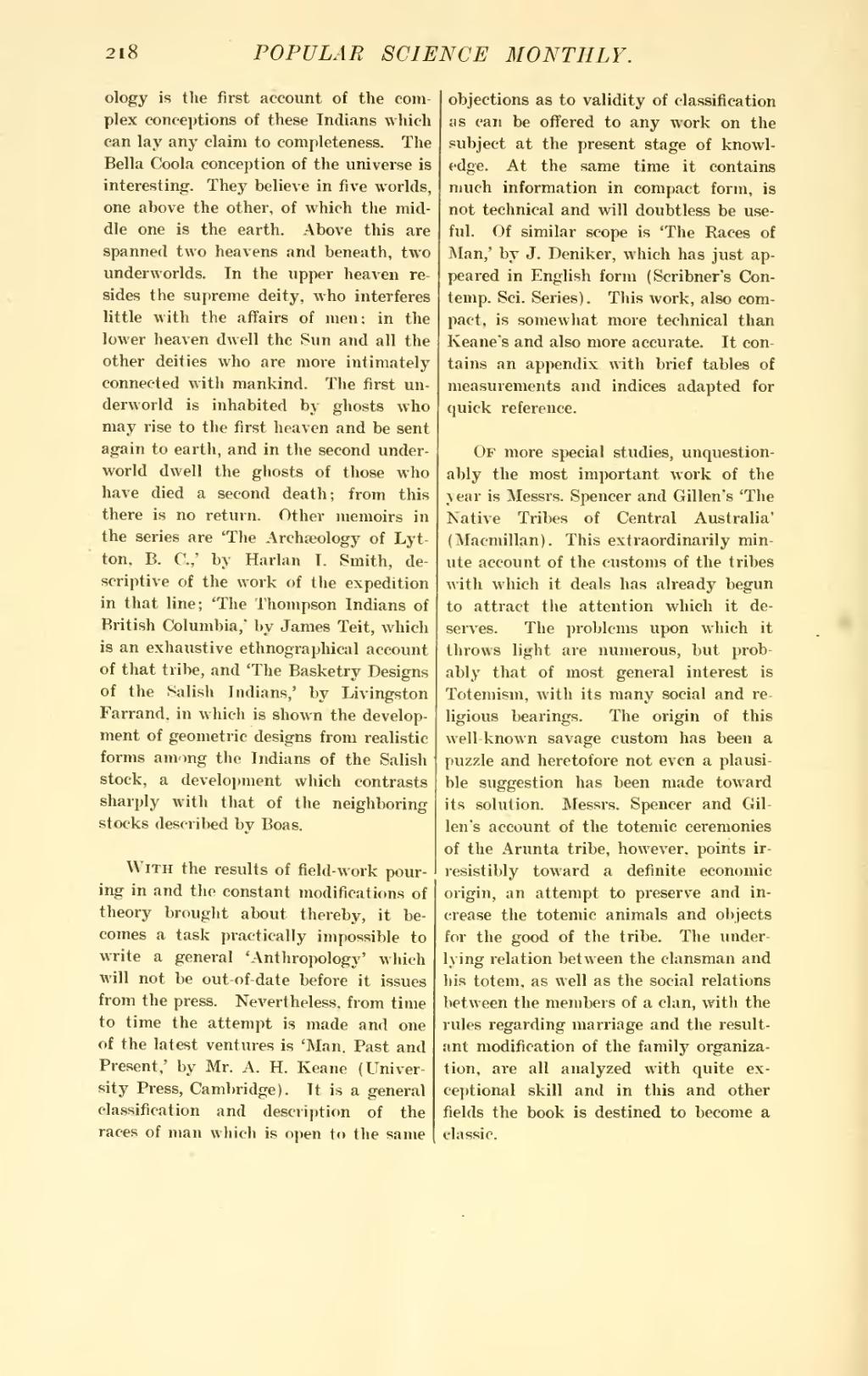ology is the first account of the complex conceptions of these Indians which can lay any claim to completeness. The Bella Coola conception of the universe is interesting. They believe in five worlds, one above the other, of which the middle one is the earth. Above this are spanned two heavens and beneath, two underworlds. In the upper heaven resides the supreme deity, who interferes little with the affairs of men; in the lower heaven dwell the Sun and all the other deities who are more intimately connected with mankind. The first underworld is inhabited by ghosts who may rise to the first heaven and be sent again to earth, and in the second underworld dwell the ghosts of those who have died a second death; from this there is no return. Other memoirs in the series are 'The Archæology of Lytton, B. C.,' by Harlan I. Smith, descriptive of the work of the expedition in that line; 'The Thompson Indians of British Columbia,' by James Teit, which is an exhaustive ethnographical account of that tribe, and 'The Basketry Designs of the Salish Indians,' by Livingston Farrand, in which is shown the development of geometric designs from realistic forms among the Indians of the Salish stock, a development which contrasts sharply with that of the neighboring stocks described by Boas.
With the results of field-work pouring in and the constant modifications of theory brought about thereby, it becomes a task practically impossible to write a general 'Anthropology' which will not be out-of-date before it issues from the press. Nevertheless, from time to time the attempt is made and one of the latest ventures is 'Man, Past and Present,' by Mr. A. H. Keane (University Press, Cambridge). It is a general classification and description of the races of man which is open to the same objections as to validity of classification as can be offered to any work on the subject at the present stage of knowledge. At the same time it contains much information in compact form, is not technical and will doubtless be useful. Of similar scope is 'The Races of Man,' by J. Deniker, which has just appeared in English form (Scribner's Contemp. Sci. Series). This work, also compact, is somewhat more technical than Keane's and also more accurate. It contains an appendix with brief tables of measurements and indices adapted for quick reference.
Of more special studies, unquestionably the most important work of the year is Messrs. Spencer and Gillen's 'The Native Tribes of Central Australia' (Macmillan). This extraordinarily minute account of the customs of the tribes with which it deals has already begun to attract the attention which it deserves. The problems upon which it throws light are numerous, but probably that of most general interest is Totemism, with its many social and religious bearings. The origin of this well-known savage custom has been a puzzle and heretofore not even a plausible suggestion has been made toward its solution. Messrs. Spencer and Gillen's account of the totemic ceremonies of the Arunta tribe, however, points irresistibly toward a definite economic origin, an attempt to preserve and increase the totemic animals and objects for the good of the tribe. The underlying relation between the clansman and his totem, as well as the social relations between the members of a clan, with the rules regarding marriage and the resultant modification of the family organization, are all analyzed with quite exceptional skill and in this and other fields the book is destined to become a classic.
